CURRENT EXHIBITION
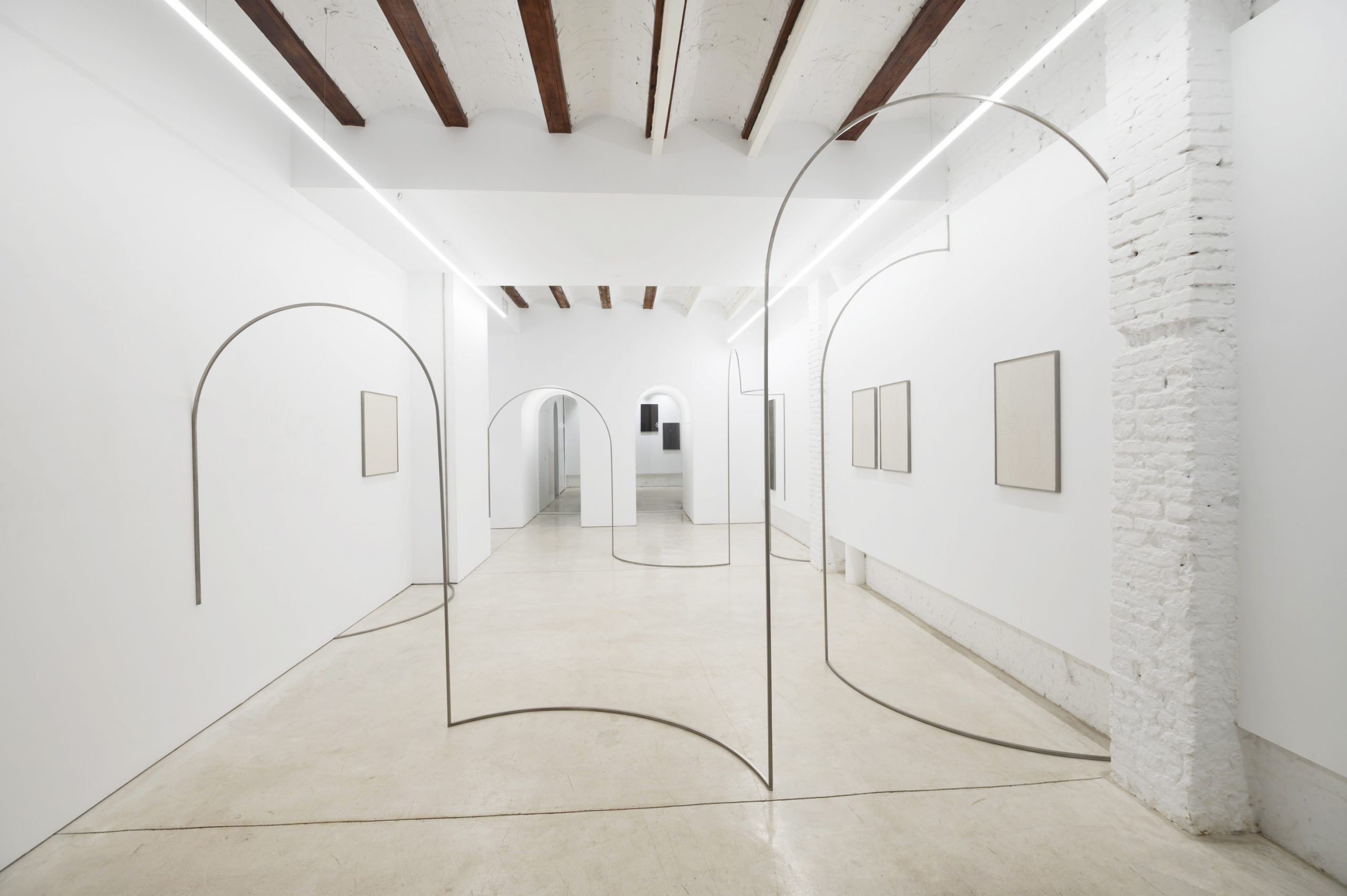
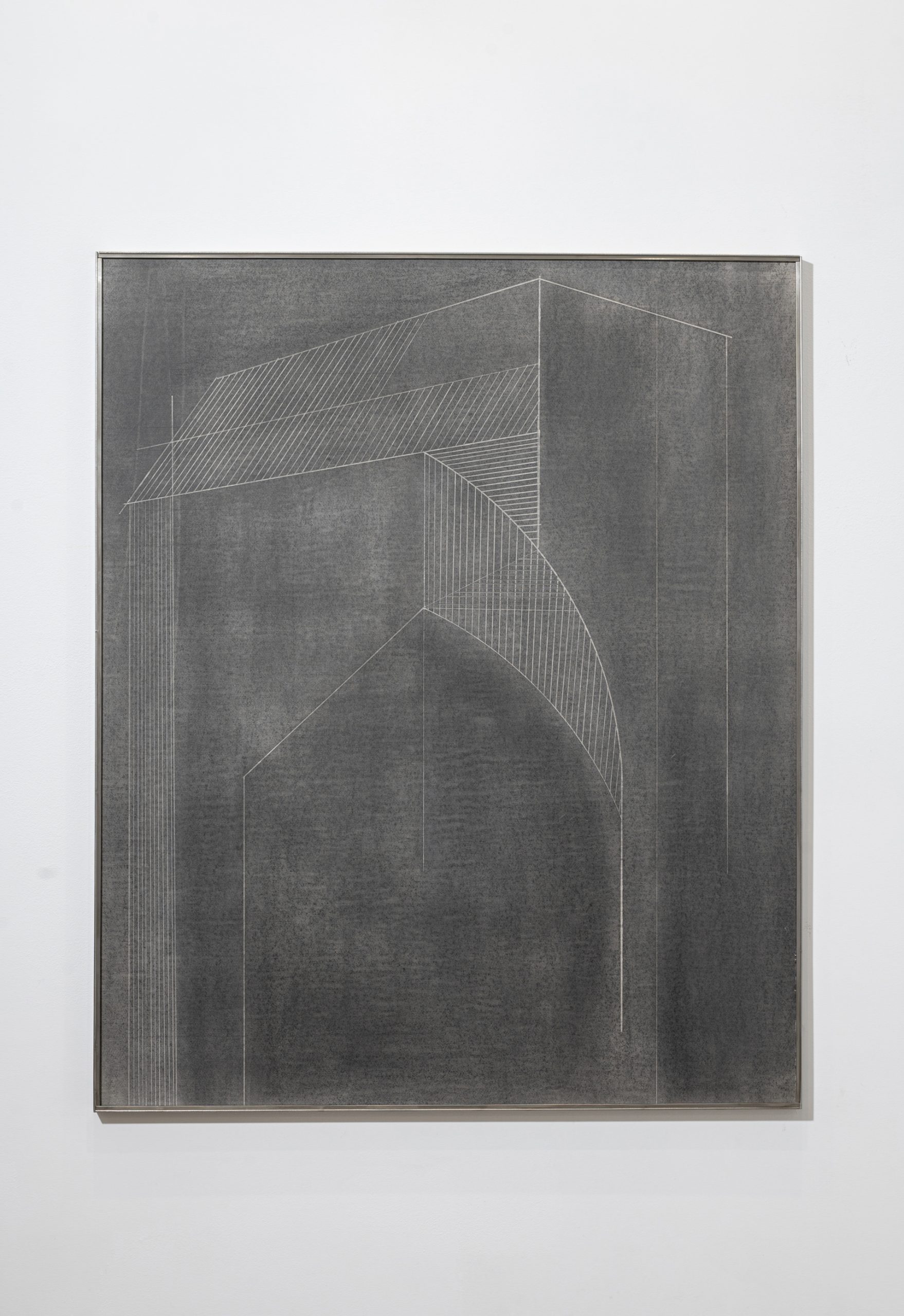
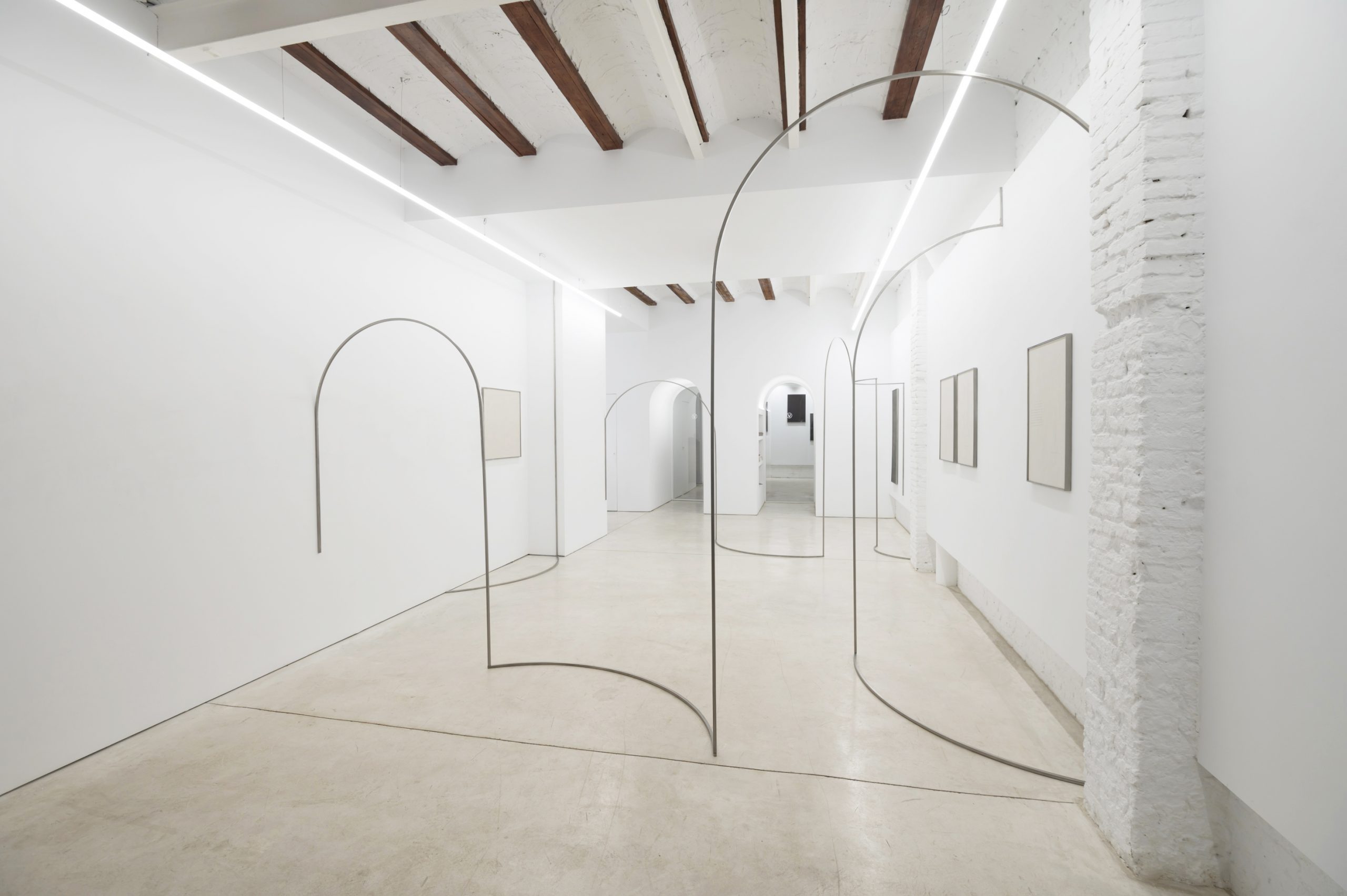
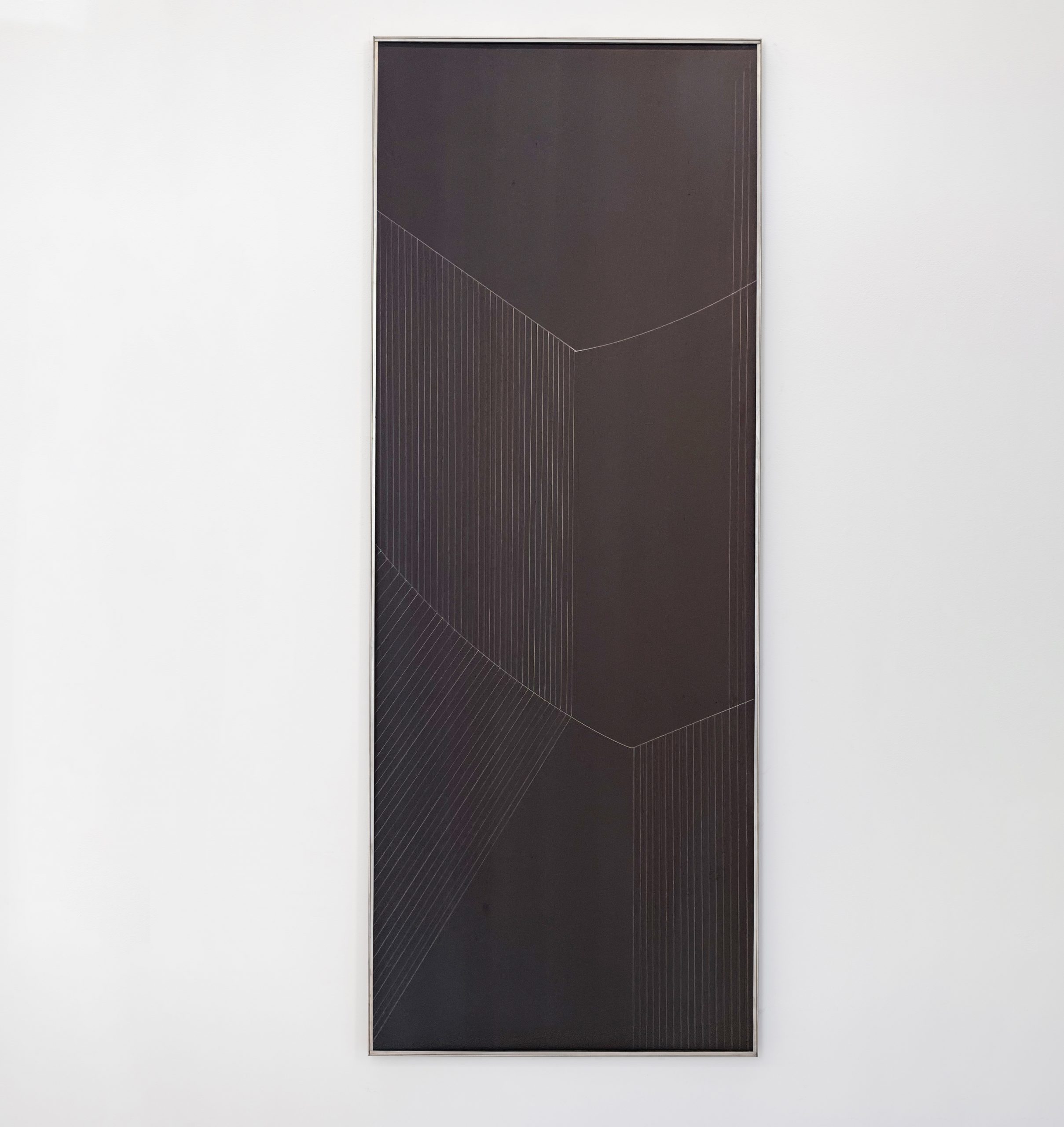
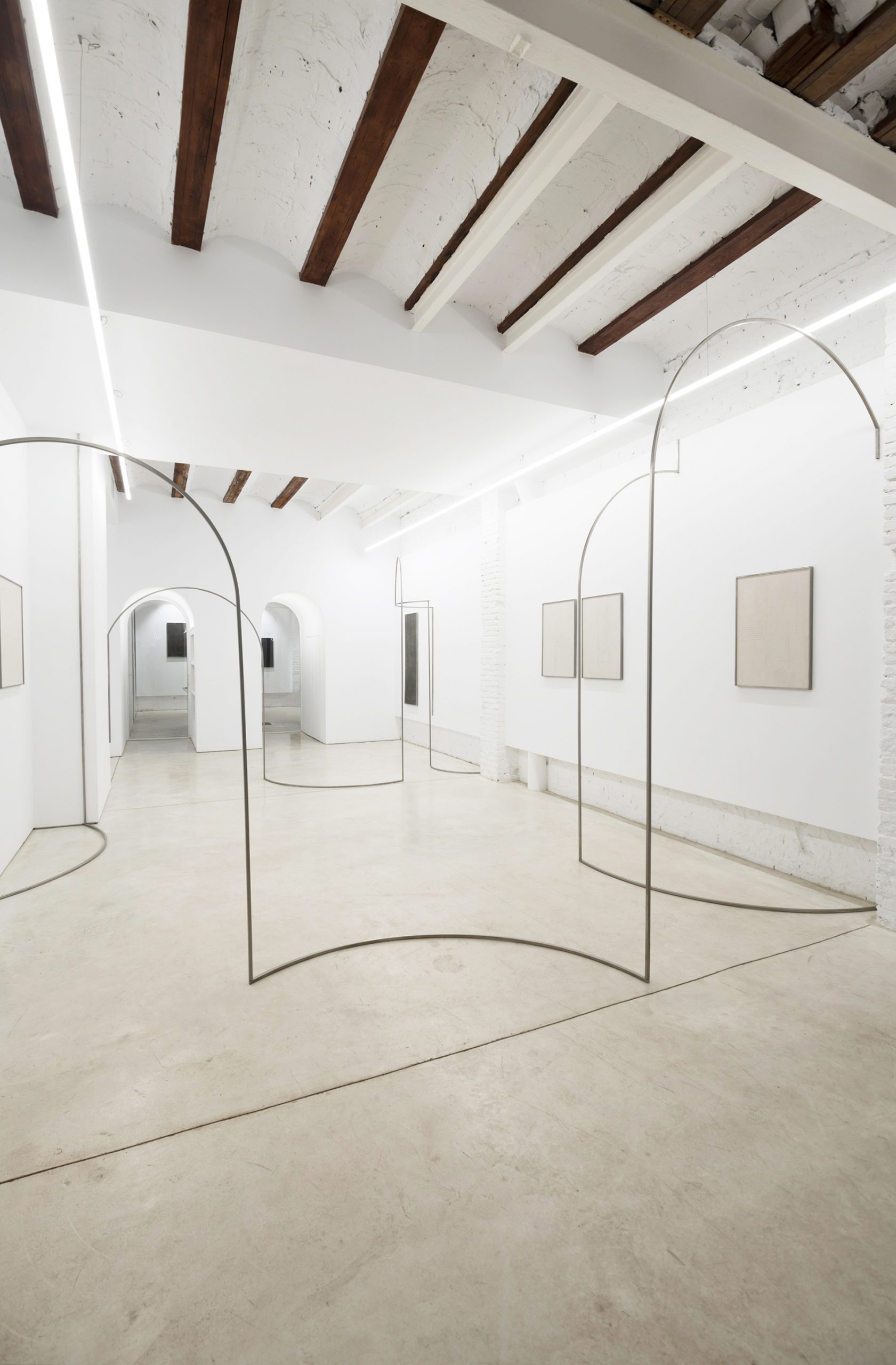
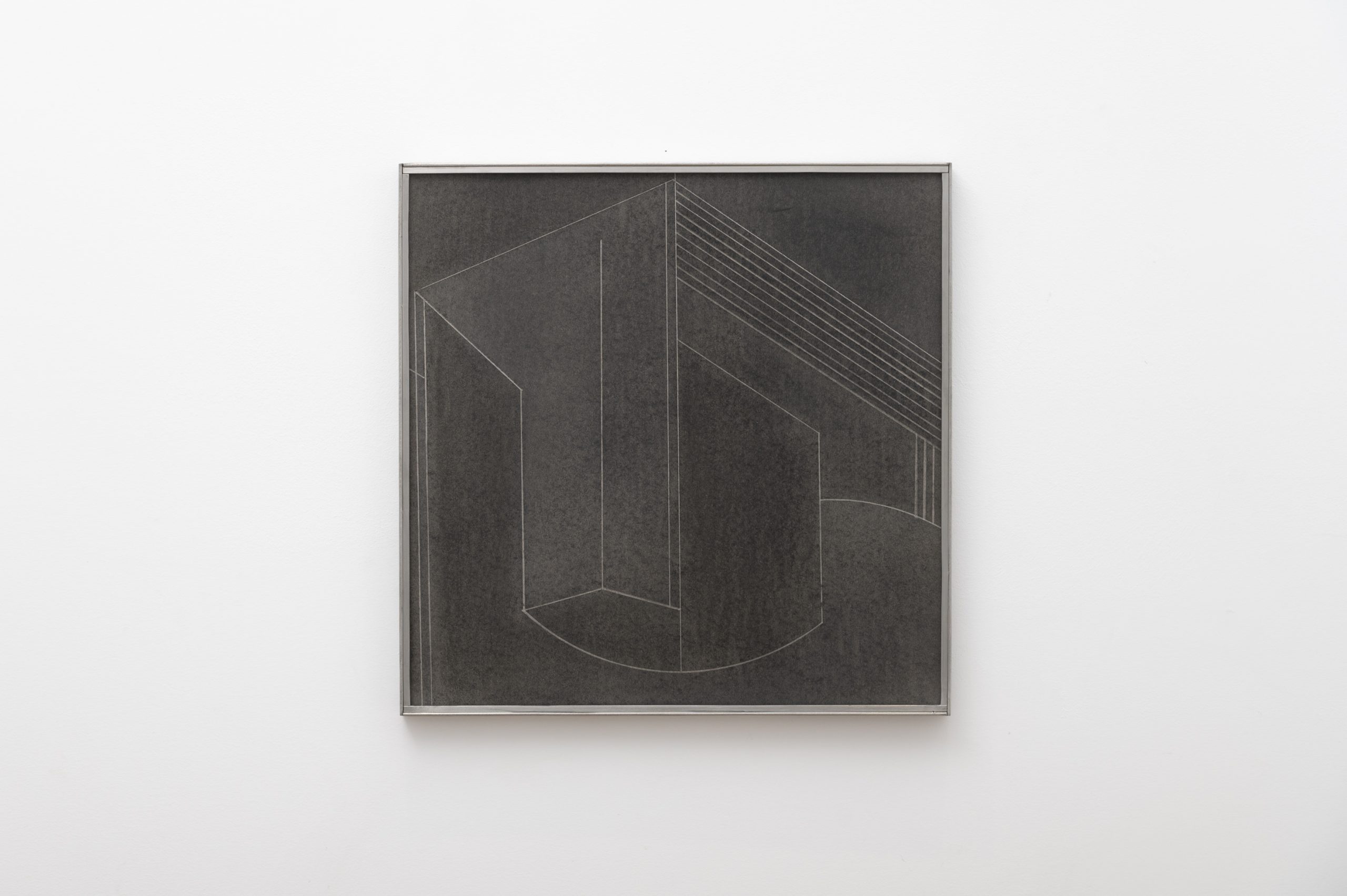
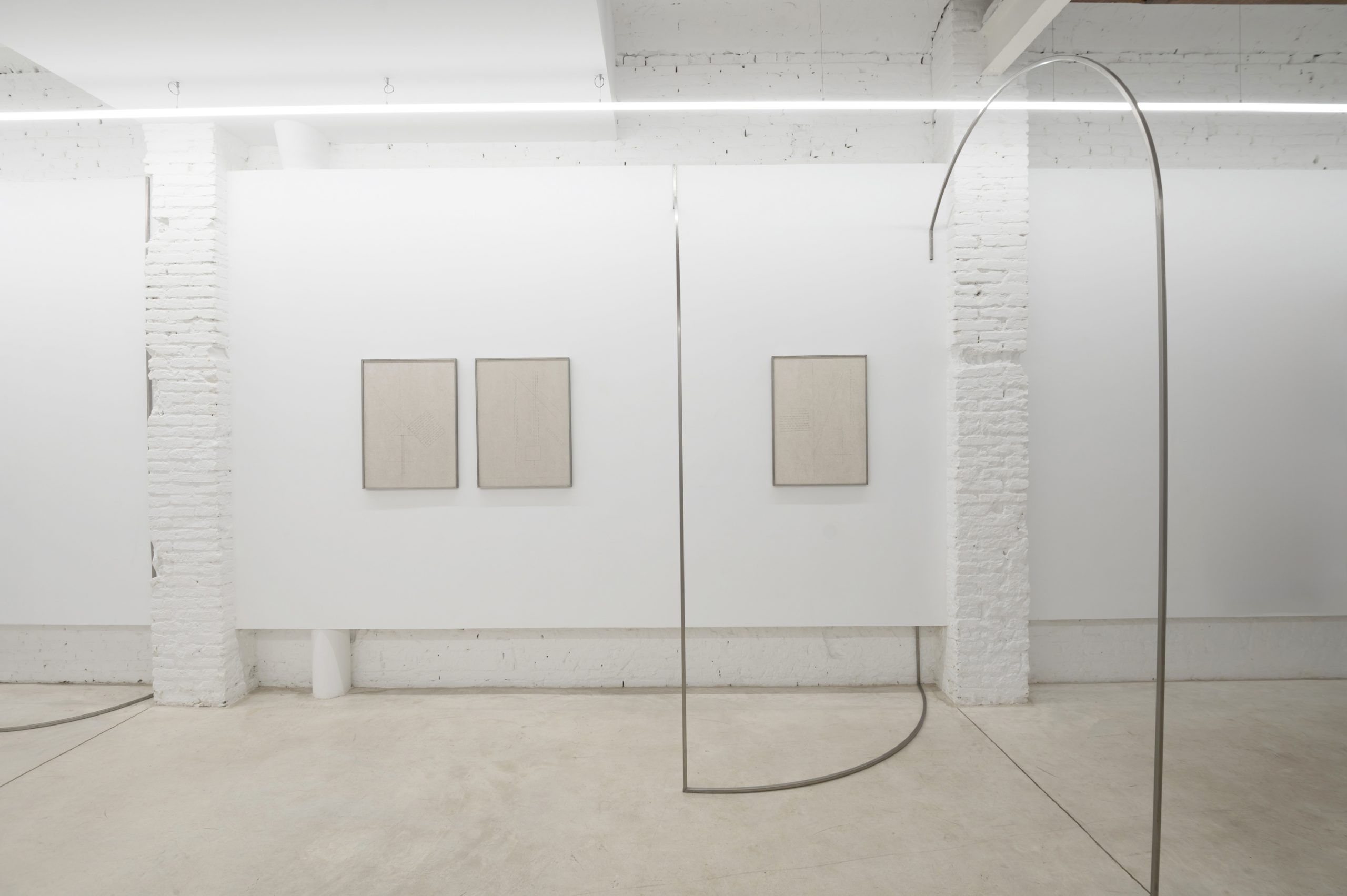
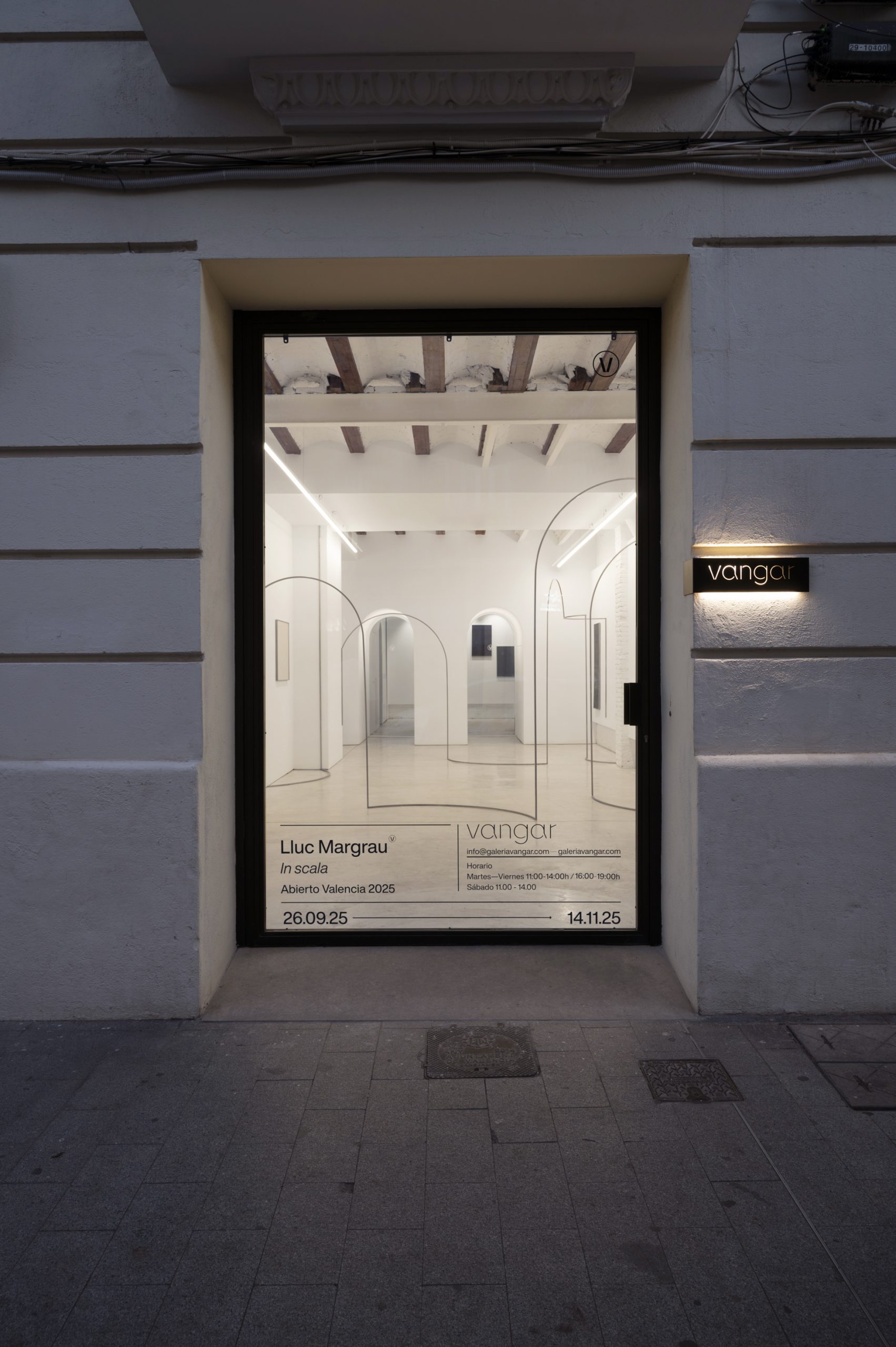
In scala
“The hand invents worlds of forms.”—Henri Focillon
In Éloge de la main, Focillon reminds us that every form is a gesture before it is a concept. The hand thinks as it acts, imprinting a rhythm on matter that not only shapes an object, but also opens up a way of inhabiting the world. This relationship between thought and stroke, body and space runs through Lluc Margrau’s work, always sustained by the minimal: the pressure of a pencil, the incision of a punch, or the line that defines an invisible arc.
drawing […] the gallery
The works on display at Vangar gallery straddle the threshold between gesture and architecture. The installation draws a walkable space in stainless steel, composed of straight lines and arches suspended in the air. t is not an autonomous object, but rather an expanded drawing that visitors can enter, pass under, surround, and measure with their own bodies. “Scale is not magnitude, but relationship,” Luigi Ghirri reminded us. So did Anne Carson, who wrote in Audubon (Men in Their Off Hours):
he built flexible frames of wood and wire
on which he arranged the skin and feathers of the bird
—or sometimes…
An image that resonates throughout this exhibition: the attempt to hold onto what slips away, to give shape to an impossible gesture. In Lluc’s work, as in Carson’s, the essential occurs in this mismatch, in what the line evokes but does not contain.
The laminated plaster pieces, presented as diptychs or triptychs or individually, extend this movement toward the intimate surface of the wall. Created using pressure, graphite, or pencils and framed in stainless steel, they transfer to the constructive support what expands in the air in the installation. There is no glass separating them; these are direct traces—inscriptions that demonstrate how domestic spaces can become writing.
to create a link
Three series or typologies: some are blackened, with barely suggested lines in relief; others combine pressure and graphite; the most restrained ones have pencil strokes that make their way like a whisper.
In this exercise of memory and forgetfulness, where a place is fixed in order to be reimagined, the artist engages with practices that conceive space as transitory. As Rosi Braidotti suggests, inhabiting means reconfiguring the world from a situated, moving body. In this sense, the artist’s work not only represents, but also proposes sensitive ways of inhabiting.
We should also remember Lluc’s hands. Hands that think as they work, moving to create their own tools, unfold a sketch, or reveal a layer of their work. His hands possess the precision of a mudra — a symbolic hand gesture in Hinduism and Buddhism that promotes energy and meditation — and the plasticity of a shadow theater, hinting at animals and figures that appear and disappear in the air. Like the prehistoric cave paintings of Chauvet and Atapuerca, which depict bison and horses in motion, these gestures remind us that every drawing is an invocation of presence, a way of inhabiting space through memory and imagination.
Thus, the exhibition proposes a transition between two registers: the installation, which fills the room with steel, forcing the viewer to inhabit the drawing; and the laminated plaster, which preserves the imprint’s fragility in its most elemental state. Between the two, a play of resonances is generated, transforming scale from an objective measurement into a sensory experience.
passing underneath, surrounding, and traversing
In In scala, these worlds of form unfold amidst the severity of architectural lines and the delicacy of pressure on plaster. They remind us that space is also conceived through touch, memory, and movement.
following in the wake of
a shadow
—Pablo Vindel
In collaboration with:
